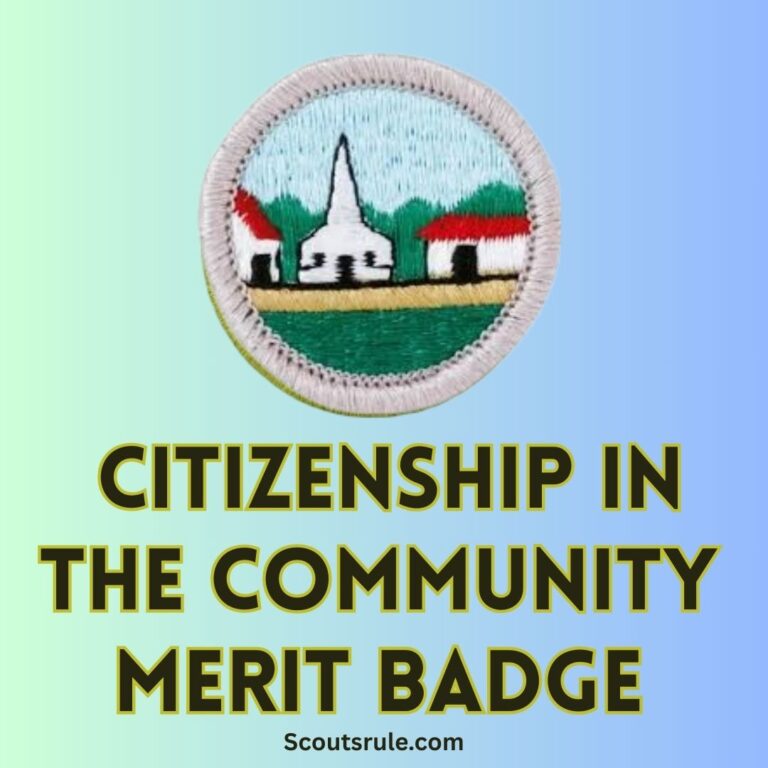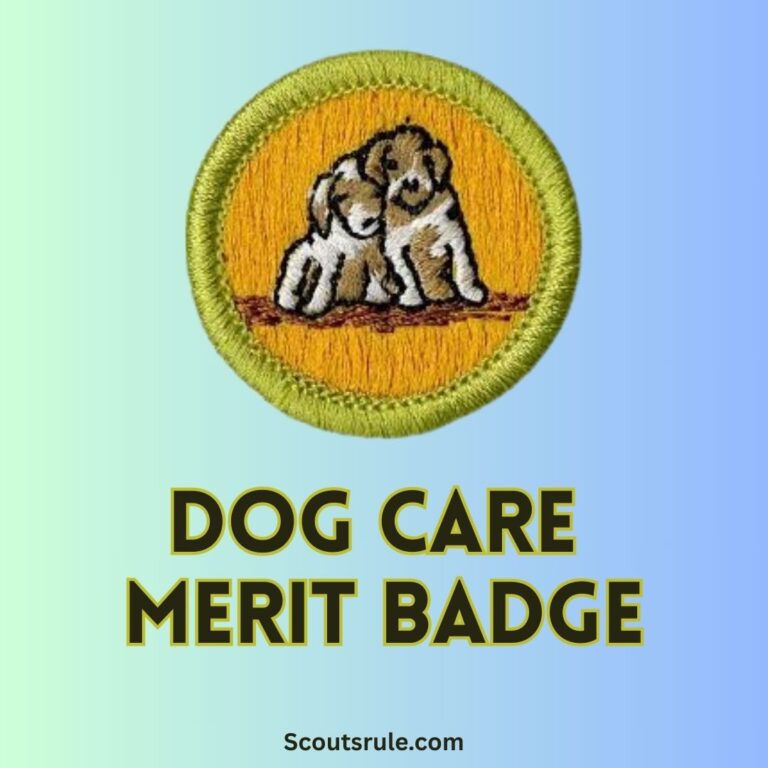
Emergency preparedness is a cornerstone of Scouting and a critical life skill. Whether you’re facing a natural disaster, a household accident, a vehicle-related emergency, or any unexpected crisis, being prepared can save lives, minimize damage, and provide immediate relief in stressful situations. The Emergency Preparedness Merit Badge challenges you to analyze the whole spectrum of emergency management—from prevention and protection all the way through to recovery—and to apply these concepts in projects that prepare you, your family, and even your community for the unexpected.
This guide will walk you through each requirement, explain key concepts such as prevention, protection, mitigation, response, and recovery, and offer hands‑on project ideas. It also includes advice on how to prepare personal and family emergency kits, collaborate in emergency service projects, understand national emergency management systems, and explore volunteer opportunities. Let’s begin the journey to becoming a responsible, proactive emergency responder.
Post Contents
- 1. Overview of the Merit Badge Requirements
- 2. Core Concepts of Emergency Preparedness
- 3. Developing a Personal and Troop Emergency Response Plan
- 4. Rescue Procedures and Special Emergency Techniques
- 5. Learning About National and Local Emergency Management Systems
- 6. Participation in Emergency Service Projects
- 7. Final Preparation and Presentation
- 8. Beyond the Badge: Making a Lifelong Commitment to Preparedness
- Frequently Asked Questions (FAQ)
- Conclusion
1. Overview of the Merit Badge Requirements
Before you start your projects, it’s essential to understand the overall structure and goals of the Emergency Preparedness Merit Badge. Although the exact requirements may vary by council, most programs include the following key components:
- Prerequisite:
Many councils require that you earn the First Aid Merit Badge. This ensures you have a good grasp of basic first‑aid skills that are crucial when emergencies occur. - Emergency Preparedness Concepts:
You will discuss and learn about the five key facets of emergency preparedness:
- Prevention: Identifying risks and taking steps to avoid emergencies before they occur.
- Protection: Implementing measures that shield people, property, and environments from damage.
- Mitigation: Reducing the severity or impact of an emergency.
- Response: Acting quickly and effectively when an emergency happens to minimize harm.
- Recovery: Restoring normalcy and repairing damage after an emergency.
- Emergency Scenario Analysis:
You must use a chart, graph, or spreadsheet to show your understanding of these facets for at least 10 different emergency situations. Often, you are required to cover critical scenarios (such as a home fire, explosion, automobile accident, or food-borne disease) along with other situations you select. - Emergency Service and Rescue Techniques:
Some requirements involve demonstrating rescue techniques and understanding specific procedures (for instance, safely extracting someone from a dangerous environment, attracting rescue aircraft, or transporting an injured person). - Emergency Management Systems:
An explanation of the National Incident Management System (NIMS) and the Incident Command System (ICS), along with identifying local government or community agencies involved in disaster response, is usually required. - Practical Emergency Service Projects and Kits:
You may be asked to participate in an emergency service project, create a troop mobilization plan, and prepare a personal emergency service pack as well as a family emergency kit.
Each requirement is designed to build your knowledge, planning abilities, and practical skills in a systematic way. As you progress, you’ll be encouraged to work both individually and with your troop or community—imparting valuable lessons in teamwork, leadership, and civic responsibility.
2. Core Concepts of Emergency Preparedness
2.1 The Five Facets of Emergency Preparedness
Understanding emergency preparedness starts with clarifying these five key elements. When discussing these with your counselor, consider the following:
- Prevention:
What are potential hazards in your environment, and how can you reduce the chance of them becoming emergencies?
Example: Installing smoke detectors at home and regularly checking their batteries are preventive measures. - Protection:
What steps can you take to protect people, property, and the environment if an emergency occurs?
Example: Using fire-resistant building materials or securing heavy furniture to walls in earthquake-prone areas. - Mitigation:
How can you lessen the impact of an emergency?
Example: Having fire extinguishers in the kitchen to quickly control small fires before they spread. - Response:
What immediate actions will you take during an emergency to preserve life and property?
Example: Following an established evacuation plan during a home fire or knowing CPR procedures. - Recovery:
What measures will help restore a community or individual’s life after an emergency has occurred?
Example: Preparing recovery cash reserves and planning to rebuild damaged infrastructure.
Discuss the types of questions you should ask to analyze each of these facets. For instance, “What steps did you take to prevent a kitchen fire?” or “How does your family recover after a minor burglary or water damage incident?”
2.2 Analyzing Emergency Scenarios
One of your requirements is to use quantitative or visual methods (like charts, graphs, or spreadsheets) to demonstrate your understanding of these five facets across emergency situations. Here’s an example outline for your analysis:
Home Kitchen Fire:
- Prevention: Install smoke detectors, avoid leaving cooking unattended.
- Protection: Use fire blankets and have an exit plan.
- Mitigation: Keep fire extinguishers nearby.
- Response: Evacuate immediately, call 911.
- Recovery: Access insurance, repair damages.
Automobile Accident:
- Prevention: Maintain safe driving habits, use seat belts.
- Protection: Airbags, vehicle safety features.
- Mitigation: Follow proper road signage and speed limits.
- Response: Perform first aid, alert emergency services.
- Recovery: Seek medical treatment, file an accident report.
And so on for five other situations (e.g., explosion in the home, food-borne illness, public place incidents, vehicle stalled in the desert, boating accidents). Choose emergency situations that are both common and challenging, to show a well-rounded understanding.
3. Developing a Personal and Troop Emergency Response Plan
3.1 Personal Emergency Service Pack and Family Emergency Kit
An essential part of the badge is preparing a personal emergency service pack and a family kit. These kits should include:
- Personal Emergency Pack:
- First aid materials (bandages, antiseptic wipes, a tourniquet)
- A flashlight (and extra batteries)
- Emergency food and water (energy bars, water purification solution)
- Multi‑tool or knife
- Emergency contact information and a small radio
- Family Emergency Kit:
- Copies of important documents (ID, medical records) in a waterproof container
- Extra clothing for each family member
- A portable phone charger
- A whistle, matches (in a waterproof container), and a basic tool kit
- A detailed family emergency plan (including evacuation routes and meeting points)
Prepare your kits with care and test them periodically. Document what you include and explain why each item is important. This documentation will be a key part of your presentation to your counselor.
3.2 Creating a Troop Mobilization Plan
As a Scout, you may be called upon to help your community during disasters. Develop a troop mobilization plan that includes:
- Roles and Responsibilities:
Define what tasks each scout can perform (e.g., first aid, communications, logistics, crowd control). - Chain of Command:
Indicate who will lead during emergencies and how decisions will be communicated. - Training:
Schedule regular practice drills and make sure everyone understands proper emergency protocols. - Communication:
Establish a reliable method of communication (e.g., group texts, radio channels) in case conventional networks fail.
Discuss this plan with your counselor, and if possible, conduct a small drill with your troop.
4. Rescue Procedures and Special Emergency Techniques
Some requirements may focus on rescue techniques and handling dangerous situations. Although these can be challenging, practice and proper instruction are key.
4.1 Handling Electrical Emergencies
For example, one scenario may require you to explain or demonstrate how to rescue someone touching a live wire. In such cases:
- Do Not Touch the Victim Directly:
Instead, use a non‑conductive object (like a wooden pole) to separate the victim from the live current. - Call for Help Immediately:
Ensure that emergency services (911, local fire department) are alerted. - Perform First Aid:
Once the victim is safe, assess for injuries such as burns or cardiac issues, and administer first aid as trained.
4.2 Transporting an Injured Person in Difficult Terrain
Another common requirement is to show a method for safely moving an injured person from a remote or rugged area. Key points include:
- Conserving Rescuer Energy:
Use a simple stretcher or improvised support (like a sturdy blanket) to minimize injury flail. - Ensuring Safety:
Always secure the injured person and move slowly, ensuring that rescue personnel are not at risk. - Practice Drills:
Either in a simulated environment or in collaboration with local emergency services, learn proper techniques for moving casualties.
4.3 Attracting and Communicating with Rescue Aircraft
In some situations, you may need to signal for aerial rescue. Consider:
- Signal Techniques:
Use mirror reflections, large signs, or smoke signals in open areas to attract attention. - Communication:
Clearly state your location and any relevant information (such as the number of people and nature of the emergency) when rescuers make contact.
Engage with local emergency management resources to learn best practices, and document your findings in a chart or diagram.
5. Learning About National and Local Emergency Management Systems
Understanding the bigger picture of emergency response in your community and nation is crucial.
5.1 The National Incident Management System (NIMS) and Incident Command System (ICS)
- NIMS Overview:
Learn how NIMS provides a standardized framework for managing emergencies regardless of size. - ICS Concepts:
Understand how the Incident Command System organizes roles and responsibilities during disasters.
5.2 Local Government and Community Agencies
- Research Your Community:
Identify your community’s emergency management director and local agencies that handle disaster response. - Volunteer Opportunities:
Talk to these agencies to learn how Scouts or volunteers can assist during emergencies. - Discussion with Your Counselor:
Explain how systems like NIMS/ICS can assist a troop during emergencies and the potential for groups of Scouts to volunteer in a coordinated effort.
Document your research and prepare a short presentation on how these systems work and how a Scout troop could interface with them during a crisis.
6. Participation in Emergency Service Projects
Practical experience is an essential component of the badge requirements.
6.1 Engage in a Real or Simulated Emergency Service Project
- Hands-On Participation:
Participate with your troop, or in collaboration with a local agency, in an emergency service project or drill. - Reflect on Your Experience:
Note what you learned about communication, teamwork, and actual emergency response techniques. - Prepare a Report:
Write a short report describing your project, your role in it, and the key takeaways. Your counselor will evaluate this report to ensure you understand the demands of real-world emergencies.
6.2 Preparing a Personal Emergency Service Pack
Beyond planning and research, you will also need to prepare a personal kit:
- Check Your Contents:
Include essential survival items and first aid supplies as described earlier. - Family Kit:
Work with your family to prepare a comprehensive emergency kit that you can quickly grab if evacuation is necessary. - Demonstration:
Show the contents of your packs to your counselor and explain why each item is necessary.
7. Final Preparation and Presentation
7.1 Document, Reflect, and Practice
Make sure you:
- Keep detailed logs, charts, and photographs that document every part of your process—from initial planning to project implementation.
- Reflect on what you’ve learned about each of the five facets of emergency preparedness and how far your personal or family practices have improved.
- Practice your emergency procedures with your troop or family, ensuring everyone understands their roles.
7.2 Meeting with Your Counselor
Before finalizing your badge:
- Review your documentation and notes with your counselor.
- Discuss any gaps or uncertainties you encountered during research or practical experiences.
- Clarify how the various components—from first aid and rescue techniques to community emergency planning—fit together in a comprehensive emergency response strategy.
8. Beyond the Badge: Making a Lifelong Commitment to Preparedness
Once you’ve earned your Emergency Preparedness Merit Badge, remember that true readiness is an ongoing effort. Some ideas to further enhance your preparedness include:
- Regular Drills and Updates:
Conduct routine emergency drills with your family and troop, and review your emergency kits periodically. - Stay Informed:
Follow local news, weather reports, and learn about updates in emergency management systems. - Volunteer:
Consider joining community emergency response teams to put your skills into practice when needed. - Share Your Knowledge:
Teach friends or younger Scouts what you’ve learned about prevention, response, and recovery. Your readiness can become a model for others.
Frequently Asked Questions (FAQ)
Q1: Why is the First Aid Merit Badge required?
A: Mastery of first‑aid skills is essential in any emergency. It lays the foundation for proper response actions, whether you’re aiding an injured person after an accident or preparing a victim for rescue.
Q2: How can I effectively use charts or spreadsheets to analyze emergencies?
A: Organize your data by listing each emergency scenario along one axis and the five facets (prevention, protection, mitigation, response, and recovery) on the other. Then, fill in specific measures for each facet. This visual representation helps you compare and contrast different emergencies.
Q3: What types of projects can I join to fulfill the emergency service requirements?
A: Projects may range from participating in a local emergency drill, assisting in a community service project related to disaster response, or even organizing a preparedness workshop at your school or troop meeting.
Q4: How do systems like NIMS and ICS affect a Scout troop during a disaster?
A: These systems provide clear roles and a structured chain of command during emergencies, making it easier for a troop to coordinate with emergency services and volunteer effectively.
Conclusion
The Emergency Preparedness Merit Badge is much more than a Scouting requirement—it’s a comprehensive journey that prepares you to face crises with confidence and competence. By exploring the five facets of emergency preparedness, analyzing real‑world scenarios, developing detailed response plans, and even participating in hands‑on service projects, you build the knowledge and skills that will benefit you, your family, and your community for a lifetime.
Embrace the challenge of learning these critical emergency skills; your commitment to readiness not only helps you earn your badge but also positions you as a proactive, informed leader in any crisis. Remember, preparedness is a continuous process, and the lessons you learn now will help you and those you serve every day.

Hi, Robin here, A former lead Scout and here I share my inspiring stories about USA Scouts, leadership, adventure, how to guides and more.






